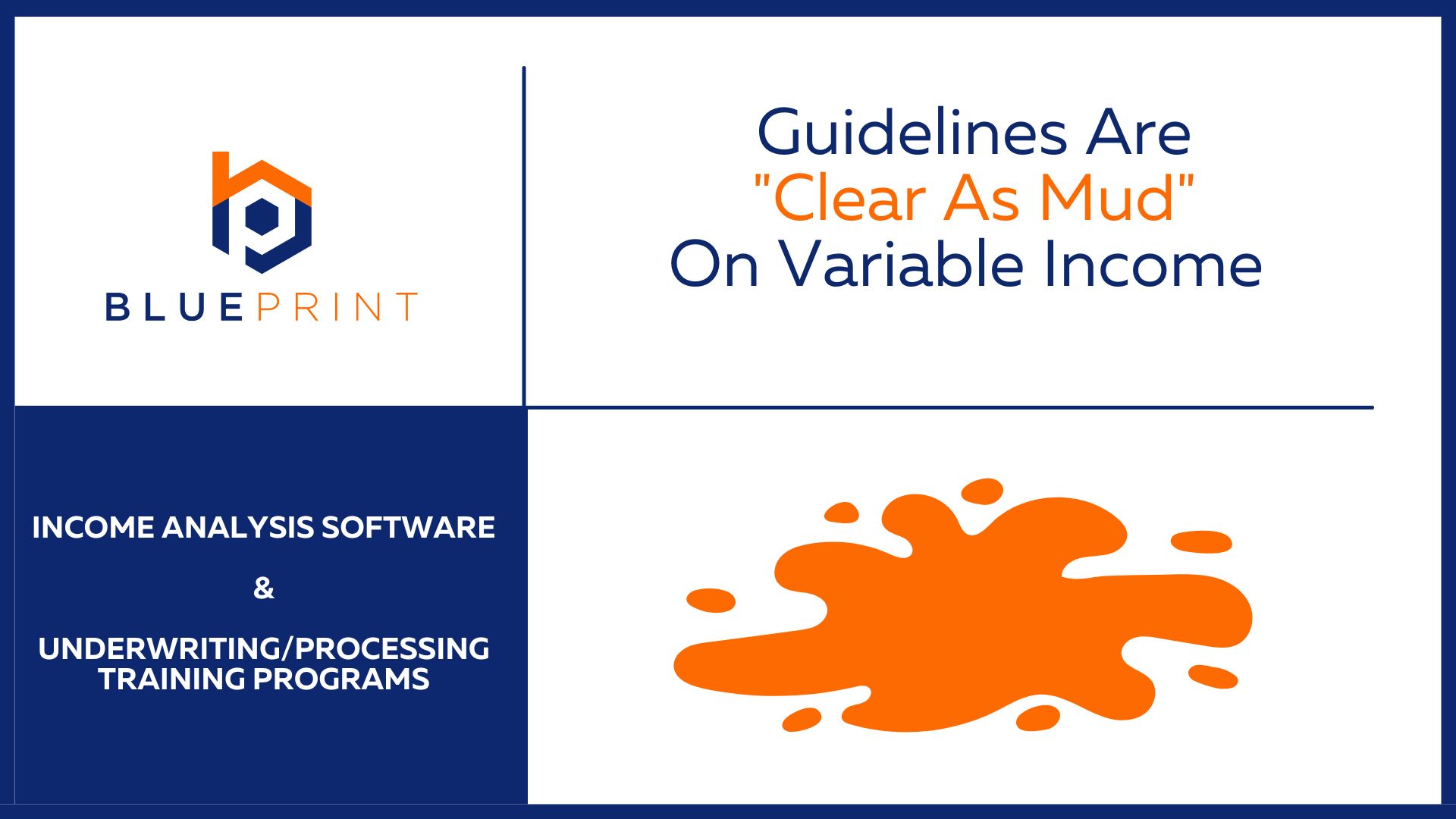When I was in the Army, getting instructions from Army manuals or from higher ranks was often “clear as mud,” meaning that even though you were given the instructions and read them over and over, you still required additional help just to figure the task out.
Over the many years I have been underwriting, some very common incomes for employed borrowers definitely have some “clear as mud” instructions on how to calculate the correct answer. Since about 65% or more of your borrowers are employed, many of them will have overtime, bonus, commission, tips, and other variable rate incomes. In this blog, I want to clarify the guidelines and help you get your borrower’s variable income right!
Misleading documentation requirements
The agencies state in the document requirement section for variable incomes to either get a VOE or most recent pay stub and IRS W-2 covering most recent 2 years. In 99% of the cases, getting paystubs will not give you enough information to determine the income. This leads us to issue number two.
Variable income continuity and trending analysis
The number one email we get from our clients working with employed borrowers who have variable pay generally sounds like this:
I have a borrower with overtime I need to qualify, but have only been provided a recent pay stub and two years W-2s. Why can’t I figure out overtime (or some other variable income) with the pay stub and W-2 in your system?
Our response is to explain that pay stubs and W-2s do not meet the requirements to use variable income. To be fair, the guidelines do say for variable incomes you can use pay stubs and W-2’s. However can not use one paystub and two years of W-2s and meet all the requirements.
Here are the steps I teach underwriters to follow to meet the requirements for overtime:
| Step One | B3-3.1-01 | Lender must obtain information on prior earnings and must view the history of receipt. |
| Step Two | B3-3.1-03 | Borrowers relying on overtime of a minimum of 12 months is considered stable |
| Step Three | B3-3.1-01 | Complete a trending analysis on EACH form of income. This must cover YTD plus last two years. Choose the correct monthly income based on trending requirements. |
If you only have a paystub and 2 years W-2s, how do you meet all these requirements in the guidelines?
The answer is you can not (unless you’re willing to guesstimate in 2021/2020).
As stated in B3-3.1-01, the lender has to show overtime has been received for a minimum of 12 months. If I see six months on the pay stub and then only have a W-2, I cannot determine if the W-2 does or does not include overtime.
What if the borrower started getting overtime in Jan of 2022 and in 2021 never got a dime of overtime? There is just no way to know that answer based on a W-2.
Therefore in 99% of the cases, if you are going to use a variable income type, you will need to get either a VOE, a VOI, or year-end pay stubs for 2021/2020 to break out the different types of income on the pay stub.
See what I mean? Clear as mud!!! Hopefully, we were able to at least filter some of the muddy water and make it more understandable. The next step is to check out Blueprint’s IncomeXpert (www.getblueprint.io). It is designed to follow all these rules and make sure YOU get the correct income!

